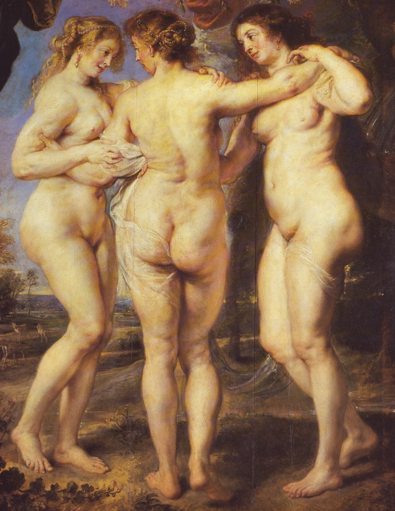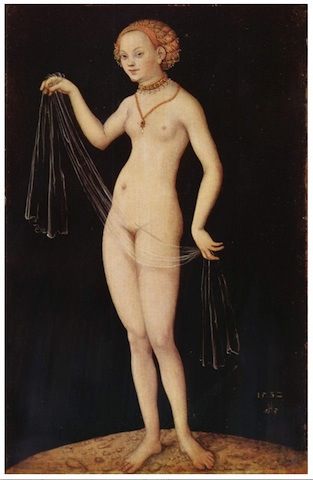NUDES AND NUDES
The nude takes many forms, and serves many agendas. Here are four examples, proving that in art, as elsewhere, form follows function.
Peter Paul Rubens devoted himself to fleshy, sensual women–richly detailed, like everything else in his paintings. The danger in being so single-minded is that the world is wide, and it is boring to notice only one possibility.
El Greco’s nudes, by contrast, are symbols of innocence, but being less bogged down in detail they are as convincing, and paradoxically more sensual, than Rubens’.


Cranach’s Venus is more overtly provocative than either the Rubens or the El Greco, but he manages this with less detail than either. He emphasizes social cues–the hip-forward posture and the teasing veil–while simplifying the body to little more than a lively silhouette. Rubens couldn’t pose a model in that position because if he did he would have to deliver the naughty bits.


Seurat dissolves the figure in pointillist dots and dashes. You’d think that this method would produce a remote and abstract image, but although she is the least detailed among these four examples, she is the most realistic, and has the most actual presence. She’s not a symbol or a pinup; her pose suggests nothing beyond herself. She’s a model posing against a wall.
This post is a reprise from February, 2012